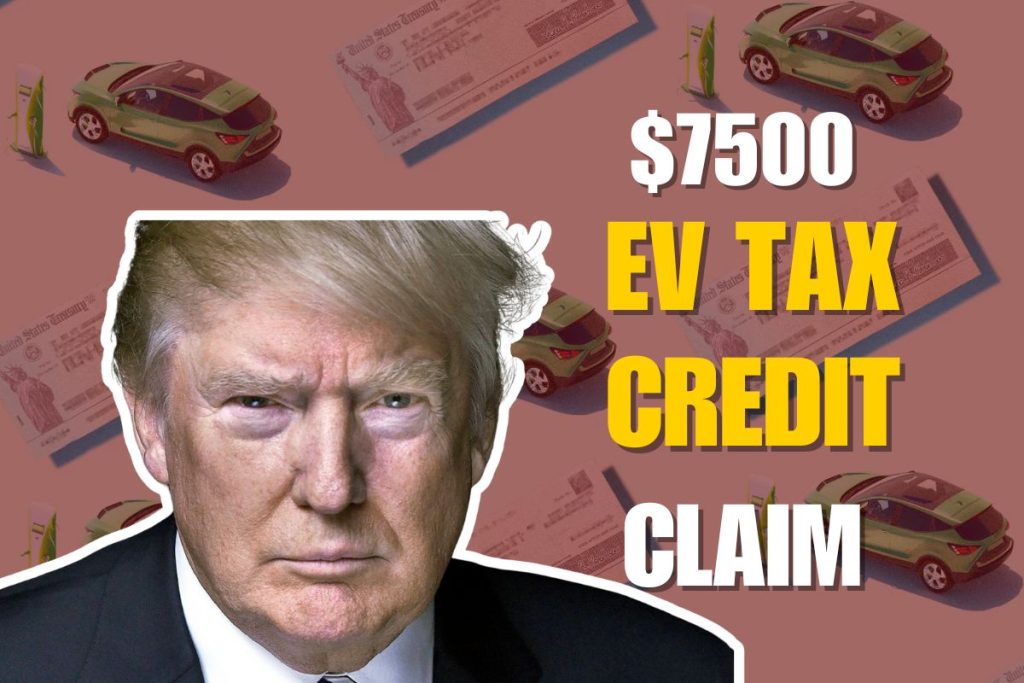In the United States 2025 will be a turning point for electric vehicle purchasers. The $7500 federal credit for electric cars will expire in 2025 after years of generous federal incentives to encourage EV adoption. The One Big Beautiful Bill Act enacted this deadline to give American consumers the last opportunity to take advantage of the substantial tax credit when buying a new electric car.
To maximize this opportunity you must know the requirements act quickly to secure an eligible vehicle and ensure that your purchase is properly documented. The financial benefit of claiming the credit can offset the high cost associated with electric cars. All details related to EV Tax Credit 2025 are here.
Understanding The Current EV Tax Credit Landscape
Tax incentives have been used by the federal government to encourage the adoption of cleaner vehicles for many years. The current credit system offers substantial savings to qualified buyers. The existing program allows consumers to claim up to $7500 for new electric cars and up to $4000 for used electric vehicles that meet certain criteria. This credit is not refundable. It can reduce your tax obligation to zero, but it would not give you a refund when the credit exceeds what you owe.
The full $7500 credit is not always available. The minimum credit is $2500. The full amount depends on the vehiclestraction batteries. The maximum credit is usually awarded to vehicles with large battery packs whereas those with smaller batteries will receive a lower credit.
US Electric Vehicle Tax Credit 2025 Overview
| Category | New EVs | Used EVs |
| Maximum Credit | $7,500 | $4,000 |
| Age Limits for Vehicles | Only New Vehicles | Minimum 2 years old |
| Price Limit (Cars) | $55,000 MSRP | $25,000 sale price |
| Price Limit (SUVs/Trucks) | $80,000 MSRP | $25,000 sale price |
| Income Limit (Individual) | $150000 | Lower limits apply |
| Income Limit (Joint Filers) | $300000 | Lower limits apply |
| Assembly Requirement | North America | North America |
| Expiration date of credit | September 30, 2025 | September 30, 2025 |

$7,500 EV Tax Credit 2025 Eligibility Criteria
1.Income Restrictions
To receive the New Vehicle Credit, your household must meet some thresholds. These will be kept at the same level in 2025 at 300,000. The amount of joint filers is 225,000, heads of household is 150,000 and individual taxpayers is 150,000. These limits are calculated using line 11 on your IRS Form 1040. They are strictly enforced.
2.Vehicle Price Limits
The IRS has established definite price caps to make sure that the credit is not limited to luxury cars but mainstream vehicles. The manufacturer recommended retail (MSRP), in the case of sedans, wagons and hatchbacks, should not exceed 55,000. The SUV, van and pickup truck limit is 80,000. These are limits that are set by the MSRP and not the negotiated price. This implies that even luxury cars with a highly discounted sticker price will not be eligible when they surpass these limits.
3.Assembly and Manufacturing Requirements
Vehicles have to be manufactured in North America to be eligible to receive any tax credit. This covers Canada and Mexico. Popular types like the BMW i4, Hyundai Ioniq 5, Kia EV6 and Toyota bZ4X that are put together somewhere else are not affected by this rule. It doesn’t really matter where the main office of the company is what matters is where the final assembly takes place.
4.Batteries and Sourcing Needs
Vehicles must also meet strict requirements for the sourcing of battery components and critical minerals. These provisions were designed to reduce dependence upon certain foreign supply chains and have reduced the number vehicles that qualify for the full amount of credit. Due to battery sourcing restrictions many models that meet the other requirements are only eligible for half of the credit amount $3,750.
$7,500 Tax Credit Deadline September 30, 2025: What it means
Recent IRS guidance offers some flexibility. It is not the date of delivery that is important for eligibility but rather when you sign a written agreement and pay a deposit. You can still get the credit if you sign a contract for a vehicle and make a payment before the deadline September 30, 2025.
IRS confirmed that this “loophole”, which allows buyers to extend eligibility until early 2026 if they provide proper documentation for their pre deadline agreement is possible. Dealerships are able to provide “time of sale reports” which document the purchase date in order to claim tax credits on 2025 returns even if delivery is delayed.
How to claim the $7500 Electric Vehicle Tax Credit
1.Traditional Tax Return Method
This form is filed with your federal tax return. This form calculates the exact amount of credit based on the vehicle you own and your circumstances. You will need to have your VIN number. Using this method, you will have to wait until your tax return is filed before receiving the benefit.
2.Point of Sale Transfer Option
You can also transfer the credit at the time you make the purchase to the participating dealer. This will give you an immediate discount rather than having to wait until tax season. This program is now available at over 9500 dealers which allows buyers to apply their credit directly to the purchase price of their vehicle. This is a great option for buyers that may not have enough tax liability to use the full credit on their tax returns.
You will be required to meet the eligibility requirements and provide proof of income at the dealership in order to use this option. The dealer will handle the paperwork, and apply the credit to your purchase. You will need to report this transaction on your tax returns.
3.Documentation Required
Maintaining proper documentation is essential, regardless of the method you use to claim. Documents that are essential include:
- Purchase agreement for a vehicle with signatures, payment confirmation and signatures
- Report of the time-of-sale from the dealer
- Vehicle Identification Number (VIN)
- Proof of Income Eligibility
- Verification of assembly location
Final Thoughts
The 2025 EV Tax Credit represents a last chance for American consumers who want to save money on their electric vehicle purchases. The deadline of September 30, 2025 is rapidly approaching. Potential buyers have a limited window to claim up to $7500 in tax benefits. The eligibility requirements are complicated and there is a limited number of vehicles that qualify. Those who can understand this they can save thousands.
This credit is not only an immediate tax incentive, but it could be the last one, as federal policy will no longer offer incentives for electric vehicles after 2025. The combination of increased model availability, improved charging infrastructure and this final tax credit will encourage buyers to purchase an electric vehicle before the deadline on September 30.
FAQ’s
1. Can I still receive the credit for my vehicle if it is delivered after 30 September 2025?
You can, provided you have signed a legally binding agreement to purchase and paid for it before September 30th 2025. The IRS clarified that eligibility is determined by the date of purchase, not delivery. Always make sure that you get the right paperwork, including a report of time-of-sale that will verify the date of purchase.
2. What happens if you earn a little more than the maximum?
You cannot claim any credit if your gross adjusted income is higher than the thresholds. Income limits are fixed and there is no phase out period. If you are married and filing jointly your income is $300,000. You are not eligible even if it is only $1 above the limit.
3. Can I claim credit for more than one vehicle in the same calendar year?
You can claim the credit if you purchase multiple vehicles that qualify in the same year. However, your total tax obligation must be met. Since it is a nonrefundable credit you cannot claim more than your federal income taxes owed. The credit amount cannot be carried over to future tax year.















